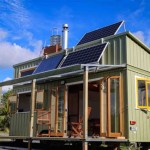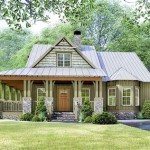A “Build Your House Plan” is a comprehensive roadmap that guides you through the process of designing and constructing your dream home. It acts as a blueprint, outlining every aspect of the project, from selecting the perfect land to choosing the final fixtures and finishes.
Whether you’re a seasoned builder or a first-time homeowner, a well-structured house plan is essential for ensuring a successful build. It provides a detailed schedule, outlines the materials and labor required, and establishes a clear budget, helping you avoid costly overruns and delays.
Now that you understand the importance of a house plan, let’s delve into the key elements and considerations involved in developing a comprehensive plan that will set you on the path to building your dream home.
When developing a comprehensive house plan, consider these 10 important points:
- Define your needs and budget
- Choose the right location and land
- Hire a qualified architect or designer
- Create a detailed floor plan
- Select materials and finishes
- Establish a realistic timeline
- Secure necessary permits and approvals
- Hire reputable contractors
- Manage the construction process
- Conduct thorough inspections
By following these key points, you can increase the likelihood of building your dream home on time, within budget, and to your exact specifications.
Define your needs and budget
The first step in building your dream home is to clearly define your needs and establish a realistic budget. This involves carefully considering your current and future lifestyle, as well as your financial situation.
Start by creating a list of your must-have features. Consider the number of bedrooms and bathrooms you need, as well as the size and layout of the kitchen, living room, and other common areas. Think about your hobbies and interests, and whether you need dedicated spaces for them, such as a home office, workshop, or music room.
Once you have a good understanding of your needs, you can start to develop a budget. Be realistic about how much you can afford to spend on the project, including the cost of land, construction, materials, and labor. It’s also important to factor in the cost of ongoing maintenance and utilities.
To ensure that your budget is accurate, it’s a good idea to consult with a financial advisor or mortgage lender. They can help you determine how much you can borrow and provide guidance on managing your finances throughout the building process.
By taking the time to define your needs and budget, you can lay a solid foundation for your house plan. This will help you avoid costly changes down the road and ensure that your dream home meets your expectations and financial constraints.
Choose the right location and land
Selecting the right location and land for your dream home is a crucial decision that will impact your quality of life and the value of your investment. Here are some key factors to consider when choosing the perfect spot for your new home:
Proximity to amenities
Consider the proximity of the location to essential amenities such as schools, hospitals, shopping centers, and public transportation. If you have children, you’ll want to choose a location that’s within a reasonable distance of good schools. If you rely on public transportation, you’ll want to make sure there are convenient bus or train routes nearby. And if you enjoy shopping and dining out, you’ll want to choose a location that’s close to a variety of retail and entertainment options.
Natural features
The natural features of the land can also play a significant role in your decision-making process. Consider factors such as the slope of the land, the presence of trees and other vegetation, and the availability of water sources. If you’re interested in building a home with a view, you’ll want to choose a location with elevated terrain. If you’re looking for privacy, you’ll want to choose a location with plenty of trees and other natural barriers.
Zoning and regulations
It’s important to research the zoning laws and regulations for the area where you’re considering building. These laws will dictate what types of structures are allowed on the land and what restrictions there may be on things like building height, setbacks, and lot coverage. You’ll want to make sure that the zoning laws are compatible with your plans for your dream home.
Cost
Of course, the cost of the land is another important factor to consider. Land prices can vary significantly depending on the location, size, and features of the property. You’ll want to factor the cost of the land into your overall budget for building your dream home.
Paragraph after details
By carefully considering all of these factors, you can choose the right location and land for your dream home. This will ensure that your new home meets your needs and expectations, and that it’s a valuable investment for years to come.
Hire a qualified architect or designer
Hiring a qualified architect or designer is one of the most important decisions you’ll make when building your dream home. A good architect or designer will help you create a home that is both beautiful and functional, and that meets your specific needs and budget.
- Expertise and experience
A qualified architect or designer will have the expertise and experience to help you create a home that is both beautiful and functional. They will be able to guide you through the design process, helping you to make informed decisions about everything from the layout of your home to the materials used in its construction.
- Objectivity and creativity
A good architect or designer will be able to provide you with objective advice about your home design. They will be able to help you to see the potential in your land and to create a home that is unique and special. They will also be able to provide you with creative solutions to design challenges.
- Attention to detail
A qualified architect or designer will pay attention to every detail of your home design. They will make sure that your home is not only beautiful, but also safe and functional. They will also be able to help you to create a home that is energy-efficient and sustainable.
- Communication and collaboration
A good architect or designer will be able to communicate effectively with you throughout the design process. They will be able to listen to your needs and ideas, and to translate them into a beautiful and functional home design. They will also be able to collaborate with other professionals, such as engineers and contractors, to ensure that your home is built to the highest standards.
Hiring a qualified architect or designer is an investment in the future of your home. A good architect or designer will help you to create a home that is both beautiful and functional, and that meets your specific needs and budget. They will also be able to help you to avoid costly mistakes and delays during the construction process.
Create a detailed floor plan
A detailed floor plan is a scaled drawing that shows the layout of your home, including the placement of walls, doors, windows, and other features. It is one of the most important parts of your house plan, as it will serve as a blueprint for the construction of your home.
- Room layout
The first step in creating a floor plan is to determine the layout of the rooms in your home. Consider how you want to use each space and how the rooms will flow together. For example, you may want to place the living room and dining room near each other to create a more open and inviting space. Or, you may want to place the master bedroom on a separate floor from the other bedrooms for added privacy.
- Traffic flow
Once you have determined the layout of the rooms, you need to consider the traffic flow in your home. Make sure that there is a clear path from the entryway to each room, and that there are no awkward or cramped spaces. You should also consider the placement of furniture and other objects to ensure that there is enough space to move around comfortably.
- Natural light
Natural light can make a big difference in the overall feel of your home. When creating your floor plan, be sure to consider the placement of windows and doors to maximize natural light. This will help to create a brighter and more inviting space.
- Storage space
Storage space is often overlooked when creating a floor plan, but it is essential for keeping your home organized and clutter-free. Be sure to include adequate storage space in each room, such as closets, cabinets, and drawers. You may also want to consider adding a dedicated storage room or attic for seasonal items and other belongings.
Creating a detailed floor plan is an important step in the process of building your dream home. By taking the time to plan out the layout of your home, you can create a space that is both functional and beautiful.
Select materials and finishes
Choosing the right materials and finishes for your home is an important decision that will impact both the look and feel of your space. Here are a few things to consider when making your selections.Flooring: The type of flooring you choose will have a big impact on the overall look and feel of your home. Consider factors such as durability, maintenance, and cost when making your decision. Popular flooring options include hardwood, laminate, tile, and carpet.Walls: The materials you choose for your walls will also have a big impact on the look and feel of your home. Paint is a classic choice, but you may also want to consider wallpaper, tile, or wood paneling.Countertops: The material you choose for your countertops will depend on your needs and budget. Popular countertop materials include granite, quartz, laminate, and tile.Cabinets: The style and finish of your cabinets can make a big difference in the overall look of your kitchen or bathroom. Consider factors such as durability, maintenance, and cost when making your decision. Popular cabinet materials include wood, laminate, and metal.Fixtures: The fixtures you choose for your home can add a touch of personality and style. Consider factors such as finish, style, and functionality when making your selections. Popular fixture choices include faucets, lighting, and door hardware.By taking the time to carefully consider your choices, you can select materials and finishes that will create a home that is both beautiful and functional.
Establish a realistic timeline
Once you have a good understanding of your needs and budget, and you have selected a location and land for your home, it’s time to establish a realistic timeline for the project. This will help you to stay on track and avoid costly delays.
The first step in creating a timeline is to break down the project into smaller, more manageable tasks. This will help you to identify the critical path, which is the sequence of tasks that must be completed in order to finish the project on time. Once you have identified the critical path, you can start to assign durations to each task.
When assigning durations, it’s important to be realistic about how long each task will take. Don’t underestimate the amount of time required to complete complex tasks, such as obtaining permits or hiring contractors. It’s also important to factor in buffer time for unexpected delays.
Once you have assigned durations to all of the tasks, you can create a Gantt chart. A Gantt chart is a visual representation of the project timeline. It shows the start and end dates of each task, as well as the dependencies between tasks. This will help you to see the overall progress of the project and identify any potential bottlenecks.
By taking the time to establish a realistic timeline, you can increase the likelihood of completing your project on time and within budget. It will also help you to avoid the stress and frustration that can come from unexpected delays.
Secure necessary permits and approvals
Obtaining the necessary permits and approvals is a crucial step in the house-building process. It ensures that your project complies with all applicable building codes and zoning regulations, and that your home is safe and habitable. The specific permits and approvals required will vary depending on your location and the scope of your project, but some common examples include:
- Building permit: This is the most important permit required for any new construction project. It authorizes you to build your home according to the approved plans.
- Zoning permit: This permit ensures that your project complies with the zoning laws for your area. It verifies that the size, placement, and use of your home are consistent with the zoning regulations.
- Electrical permit: This permit is required for any electrical work that will be done on your home. It ensures that the electrical system is installed safely and in accordance with the electrical code.
- Plumbing permit: This permit is required for any plumbing work that will be done on your home. It ensures that the plumbing system is installed safely and in accordance with the plumbing code.
- Mechanical permit: This permit is required for any mechanical work that will be done on your home, such as the installation of a heating or cooling system. It ensures that the mechanical system is installed safely and in accordance with the mechanical code.
To obtain the necessary permits and approvals, you will need to submit a set of plans and specifications to your local building department. The plans and specifications should include detailed information about your project, such as the size and layout of your home, the materials that will be used, and the systems that will be installed. The building department will review your plans and specifications to ensure that they comply with all applicable codes and regulations. If your plans are approved, you will be issued a building permit.Once you have obtained a building permit, you can begin construction on your home. However, it is important to note that you may need to obtain additional permits and approvals during the construction process. For example, you may need to obtain a permit for the installation of a septic system or a permit for the construction of a deck or patio. It is important to check with your local building department to determine which permits and approvals are required for your specific project.Failure to obtain the necessary permits and approvals can result in significant delays and penalties. In some cases, you may even be required to stop construction or demolish your home if it does not comply with the applicable codes and regulations. Therefore, it is important to take the time to secure all of the necessary permits and approvals before you begin construction on your home.
By following the steps outlined above, you can ensure that your house-building project is compliant with all applicable codes and regulations. This will help to protect your investment and ensure that your home is safe and habitable.
Hire reputable contractors
Hiring reputable contractors is essential for ensuring that your house-building project is completed on time, within budget, and to your satisfaction. A good contractor will have the experience and expertise to manage all aspects of the construction process, from obtaining permits and approvals to scheduling subcontractors and overseeing the day-to-day construction activities.When hiring a contractor, it is important to do your research. Get referrals from friends, family, or other professionals in the construction industry. Ask for bids from multiple contractors and compare their prices, experience, and references. It is also important to check the contractor’s license and insurance to ensure that they are qualified and financially responsible.Once you have hired a contractor, it is important to communicate your expectations clearly and in writing. This includes the scope of work, the budget, and the timeline. It is also important to establish a payment schedule and to make sure that the contractor is paid on time.Throughout the construction process, it is important to maintain open communication with your contractor. This includes attending regular progress meetings and promptly addressing any issues that arise. By working together, you can ensure that your house-building project is completed to your satisfaction.
By following the tips outlined above, you can increase the likelihood of hiring a reputable contractor who will help you to build the home of your dreams.
Manage the construction process
Managing the construction process is a complex and challenging task, but it is essential for ensuring that your house-building project is completed on time, within budget, and to your satisfaction. The following are some key tips for managing the construction process:**Develop a detailed construction schedule.** A construction schedule is a roadmap for your project. It outlines the sequence of tasks that need to be completed, the estimated start and finish dates for each task, and the dependencies between tasks. A well-developed construction schedule will help you to stay on track and avoid costly delays.**Hire qualified subcontractors.** The quality of your home will depend on the quality of the subcontractors you hire. Take the time to research and interview potential subcontractors, and check their references. Make sure that the subcontractors you hire are licensed, insured, and experienced in the type of work that you need done.**Supervise the construction process closely.** Once construction begins, it is important to supervise the process closely. This includes attending regular progress meetings, inspecting the work that is being done, and addressing any issues that arise. By supervising the construction process closely, you can help to ensure that your home is built to your specifications and that it meets all applicable building codes and regulations.
By following the tips outlined above, you can increase the likelihood of managing the construction process successfully. This will help you to build the home of your dreams on time, within budget, and to your satisfaction.
Conduct thorough inspections
Thorough inspections are essential at every stage of the construction process. This includes pre-construction inspections, during construction inspections, and final inspections. Pre-construction inspections help to identify any potential problems with the site or the plans. During construction inspections help to ensure that the work is being done according to the plans and specifications. Final inspections help to ensure that the home is complete and ready for occupancy.Pre-construction inspections should be conducted before any construction begins. This inspection should be conducted by a qualified inspector who will examine the site and the plans for the home. The inspector will look for any potential problems that could affect the construction process, such as soil conditions, drainage issues, or conflicts with existing utilities.During construction inspections should be conducted regularly throughout the construction process. These inspections should be conducted by the homeowner, the contractor, and a qualified inspector. The inspector will examine the work that has been completed to ensure that it meets the plans and specifications. The inspector will also look for any potential problems that could affect the safety or quality of the home.Final inspections should be conducted once the home is complete. This inspection should be conducted by the homeowner, the contractor, and a qualified inspector. The inspector will examine the home to ensure that it is complete and ready for occupancy. The inspector will also look for any potential problems that could affect the safety or quality of the home.By conducting thorough inspections at every stage of the construction process, you can help to ensure that your home is built to your specifications and that it meets all applicable building codes and regulations.










Related Posts








